
Table of Contents
RISING OIL PRICES – WINNERS and LOSERS
Q1. Relation of Price Elasticity of Demand and Supply with Increasing Size of Oil Price for Latest Oil price Increasing in Ending of 2022
“Elasticity” refers to a concept of a sensitivity of buyers and suppliers to changes with their income or price changes of their consuming goods (Helena, 2017). “Price elasticity of demand and supply” includes the size of change in quantity demanded and supplied with that of price change (Friedman, 2019). Hence, differences are in their responsiveness of buyers and suppliers to that price change. In this question, oil is considered as a discussing area and this is a commodity of necessary use.
There are some products that are “price inelastic” in supply such as housing, gasoline, water and in this list, petrol or oil is also added. “Price inelasticity” refers to a situation where price changes do not affect the quantity supply of that product. In this case, even at the end of 2022 price of oil rises there is a slight or no more change in production of oils. This means oil is fairly “price inelastic” in the short run and production is exogenous (DeGolyer & MacNaughton, 2021). Hence, supply of other items that are using fuel depressed due to this rise in fuel costs. High input costs reduce production and that hampers supply of other fuel dependent products.
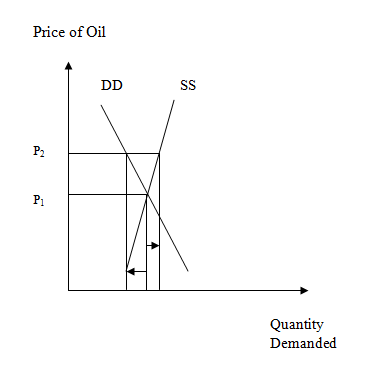
Figure 1: Supply is Less Inelastic to Change in Price
Supply is again dependent on demand for that product. Transport is a necessary medium of an economy. Price of oil rises to $ 85 per barrel and it does not reduce its demand at a high level. Responsiveness of consumers to this price change is lower as well. On the contrary it raises demand up to 3 barrel per day. A consumer having cars they have to buy oil irrespective of that price change. This allows a broadening size of increasing oil price at higher rate due to post Covid-19 demand. As per figure 1 it is shown that size of effect is greater on demand side. That is why “supply curve” is steeper and a high price does not increase supply that much.
Now, cars are also available with renewable energy resources. Inelastic or lower inelastic behavior of consumers made them choose efficient energy resources. They can shift their demand to electric cars or products based on green or coal energy resources in the long run and demand falls for oil. For future buyers of cars or any businesspersons before starting their production process, an important focus is to improve fuel efficiency due to a rise in oil price at the end of 2022.
Q2. Determination of Price Elasticity of Demand-Supply and Income Elasticity of Demand
a) Price Elasticity of Demand for Oil
Price Elasticity of Demand for oil implies a certain change in quantity demanded with a 1% change in price of that commodity. In this case, oil price rises rapidly based on many factors such as political, cut down of production and supply of oil due to covid-19 pandemic. In that case, demand remains the same or rises among personal car users or any production of other goods that are necessary for achieving economic growth. Even post pandemic situations raise demand for oils in the transport and production industry both. According to Talat (2019), It is said that demand for oil is “price inelastic” based on a dependency of an economy on fuel factor and its formula of calculation is,
Ed = Percentage change in quantity Demanded / Percentage Change in Quantity Price

Figure 2.a: Price Elasticity of Demand with High Oil Price
Value of Price Elasticity of demand is 0.108 with $ 85 and $67 price with 99 and 96.5 barrel of demand. Value is less than 1 after including |Ed|. It is evident from shape of the “demand curve” in figure 2.a that high price change reduces less amount of demand. In short run, “Demand” of oil is then “inelastic” to price change.
b) Income Elasticity of Demand for Oil
In this question, a relationship between income and demand for oil is observed. Income elasticity is a concept where rise or fall in income changes the demand of a commodity. A normal good or a necessary item has a sharp increase in demand due to rise in income. Oil is considered as a normal or sometimes as a necessary good as well. It is clear that increase in income raises demand for oils in the short run period (Bohi, 2016). More fuel engagement then uplifts economic growth and as a result, demand of oil with increasing income is inelastic and it can be calculated through,
E i = Percentage change in quantity Demanded / Percentage Change in Income
Income is varied from $58510.24 to $60836.77 with same amount of demand and value of elasticity is 0.6559, which is again less than 1 after generating |Ei|. This means income is inelastic to demand.
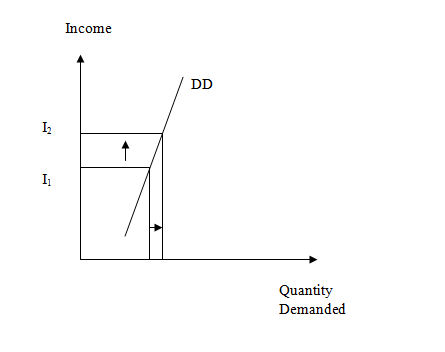
Figure 2.b: Inelastic Demand of Oil Price
Demand is also “inelastic” with change in income and it can be shown from figure 2.b that High-income encourage small amount of quantity demanded.
c) Price Elasticity of Supply of Oil
Supply is a dependable factor on price and demands both. The “law of demand” states that a rise in demand reduces price and that reduces an amount of supply (Vallejo, 2021). This means increasing prices raise supplies of goods. For this oil price scenario, price-increasing manner does not influence change of supply of oil that much. Due to low elasticity of supply there is no change in supply of oil. Now if processes of oil extraction and its costs of production are feasible, then supply of oil is fairly price inelastic. This is due to a non-substitutionary nature of oil in the global market of consumer and production and Its formula of calculation is,
Es = Percentage change in quantity Supplied / Percentage Change in Price
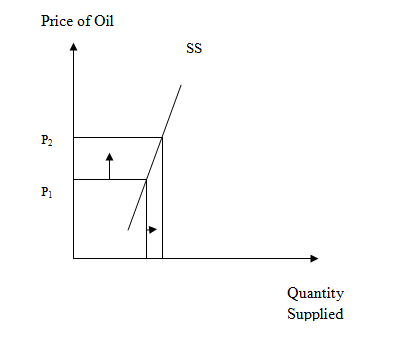
Figure 2.c: Price Elasticity of Supply
Value of Price Elastic of Demand is 0.087 after including |Es|, which is less than 1. Shape of “supply curve” in 2.c shows that there is fairly “inelastic” supply of oil with change in price. This means high price does not raise a huge amount of supply.
Q3. Overshooting of Oil Price from its Equilibrium Price
Equilibrium price is that where demand for oil in the global economy met with that of supply and there is no shortage or excess in supply and demand respectively. Now as per “law of demand”, price falls increases demands and as a result, supply rises. Again, as per “law of supply”, price rise of any commodity with no change in income can uplift supply. In this condition, rise of oil price has an inelastic nature for both price elasticity of demand and supply. As a result, rise in price does not lower demand in a short run situation and with this supply rises (Arezki & Jakab, 2017). More demand increases supply. Further, due to less effect of price rise producers face positive profit and they improve their supply and demand increases again in a short run. This is a reason for overshooting equilibrium prices in an oil industry only in a short run.
a) Destabilizing Effect of Speculation on Oil Price
Oil price is a perfect commodity for trading and investors try to make market trends. According to AlDulaimi (2022), destabilization occurs when there is a price change and suppliers hold supply of oils for further rise of price. Speculators in this situation raise their demand by speculating on future rise of price (P to P’). Initial increase of price creates more demand.
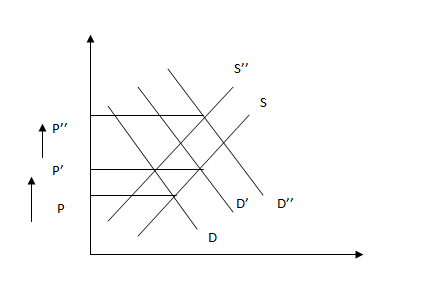
Figure 3.b: Destabilization after Price Rise
Again, as per Shear (2020), further price rise is held with more profit speculation of suppliers (P’ to P’’). This Quantity demanded does not increase as much compared to the past scenario. The expectation of rising prices becomes self-fulfilling then.
b) Stabilizing Effect
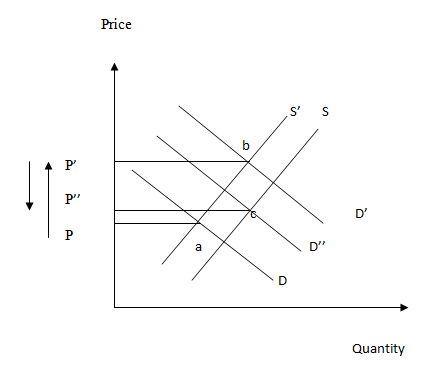
Figure 3.a: Stabilization after Price Rise
A sudden shock in demand increases the price level by maintaining the theory of “Law of demand”. As a result, high price supply also rises (P to P’). Consumers in initial stages are not able to find a substitute product to shift their product or to buy less due to this high price (Arezki & Jakab, 2017). Over time mostly in long run, higher price cuts demand or shifts consumers to any other goods. This inverse scenario makes prices fall to a feasible level (P’ to P’’).
Q4. Types of Industries that might Gain/Loss from Higher Oil Price with Reason
Industries that are directly related to supply and production of crude oils are benefited through higher prices of production. On the other hand, industries that use oils as an important input of their production of goods experience loss at a high range. Production of any final good depended on scarcity of their raw materials, energy resources, political environment and many more. Price of that product is also determined upon input usage. Now, the increase in input price raises the price of other manufactured goods also.
Positive influences on Industry of Oil Exploration
Industries that are involved in exploration of oils face beneficiary matters due to the high price of oil. Price of oils makes production or extraction processes are considered to be cheaper. Again, it is also beneficial for OPEC countries that are engaged in export of oils such as Russia, Saudi Arabia and many more (Eia.gov, 2018). Due to high prices, export seems to be profitable.
Industries that Experiences Loss due to High price
Transport Industry
Transport has a significant impact with loss in passengers due to the high price of oil. High prices initiate rising fares and that decrease the availing of passengers (Economictimes.com, 2021). Many oil marketing companies and dealers also face price rises that are less profitable. Their supply price does not rise up to change in oil price and their profit margin falls.
Paint Industry
Crude oil is highly used as an important input in the paint industry. 50 to 60% costs of paint products are related to this crucial raw material of production (Products.pcc.eu, 2021). It also reduces profit margins of business owners of that sector. Not only as a raw material but also application of paint includes oil usage. This is another negative influence from the consumer’s side.
Industry of Tires and Automobile Industry
Tires are such products that engage seventy gallon of oils to produce a single tire. Oil is a primary input of making tires and in this industry moreover 85 million barrels are used in a single day. Tires are an intermediate item of the automobile sector. This means costs of a car depend on its quality of tire also. High price of oil makes manufacturing sectors costly and this increases the price of final goods (Products.pcc.eu, 2021). All businesspersons that are involved in production of manufacturing products, production or sales of finished products face certain loss due to increase in price of oils.
Aircraft Industry
Airlines transport uses oil not only as their energy resources but also for several important services. Oils have a huge contribution in this industry. For lubrication to friction control, corrosion protection or cleansing aspect, these all depend on oil. Even noise reduction operation of propeller purpose both engages oil usage. In case of oil price increases, those countries who are based on import of oil such as the USA, face significant loss in economic activities. Firstly, their imported value rises with transportation and maintenance costs. As a result, the fare price of aircrafts got a sudden hike.
Q5. OPEC’s Best policy
There is a long-term effect on this price rise of oil from the past scenario, which was created from 2015 to 2016. Since then high prices have influenced negatively on imported countries rather than exported countries. OPEC countries then follow some policies in the following context to safeguard or control the surge of oil prices.
In this situation, where demand rises with rise in price, all the countries under OPEC then hold a high-cost market competitor policy for experiencing a better trading market. To attain this policy, OPEC countries have to follow some actions that can help them to sustain this policy in the long term. It also maintains “monetary policy” to safeguard their supply with increasing costs. “Liquidity” and investment makes a feasible cash hold in hand of consumers.
Capacity Expansion
High prices are a factor of reducing the amount of supply in an economy. There is a sudden shock in demand and as a result, supply falls. To maintain a certain price floor of oil OPEC countries can incline their production of oils. There is a lack of pipeline capacity among various exporting countries such as Mexico, Canadian Shield and many more.
Investment
OPEC countries can invest more in availing in high cost competition. More investment makes the way easier in capacity control. They need more funding from the IMF. In production of oil fields, the number of wells has declined in covid-19 pandemic. In that time investment is also reduced due to the shutdown of economic activities. In this case, investment can strengthen capacity controls and this initiates OPEC countries to follow high price competition and provide better service to importing countries.
Oil Inventory Control
Maintaining a proper inventory control can help a country to sustain after any sudden shock situation. The Covid-19 pandemic makes a sudden shock in producing or supplying oil. Devastating war washed out many pumps and warehouses that affected the supply of oils in Russia. Making investment perpetual hold of Inventories such as casings, pipelines, chemical drums and many more makes a protection for supply in critical situations and in a high cost competition OPEC can provide systematic supply in an inelastic market of oil.
Incentive Measures
Incentives to importer countries make a positive market for sustainability. Collaborative approaches or any partnership encourages the sales of products as well. OPEC countries such as Saudi Arabia, Kuwait, Venezuela built a collaborative relationship and experienced high profit in this increasing condition of oil price. There is another strategy to follow high cost market policy and that is to set a quantity floor for importing oils.
Bibliography
AlDulaimi, H. A., mohamed Aljebory, A., & A-Bakri, M. J. K. (2022). THE EVALUATION OF CRUDE OIL PRICE-ARTICLE FOR IRAQ. World Economics and Finance Bulletin, 10, 104-111. Retrieved on: 1 July 2022, Retrieved from: https://scholarexpress.net/index.php/wefb/article/download/1003/900
Arezki & Jakab (2017), Oil Prices and the Global Economy, Retrieved on: 1 July 2022, Retrieved from: https://www.google.co.in/books/edition/Oil_Prices_and_the_Global_Economy/Kl8ZEAAAQBAJ?hl=en&gbpv=0
Bohi (2016), Analyzing Demand Behavior, Retrieved on: 1 July 2022, Retrieved from: https://www.google.co.in/books/edition/Analyzing_Demand_Behavior/r40uAgAAQBAJ?hl=en&gbpv=0
DeGolyer and MacNaughton (2021), Twentieth Century Petroleum Statistics, Retrieved on: 1 July 2022, Retrieved from: https://www.google.co.in/books/edition/Twentieth_Century_Petroleum_Statistics/fn-vzgEACAAJ?hl=en
Economictimes.com (2021), Oil-On-Fire-Who-Gains-Who-Loses, Retrieved on: 1 July 2022, Retrieved from: https://economictimes.com/markets/commodities/news/oil-on-fire-who-gains-who-loses/articleshow/86982108.cms
Eia.gov (2018), Oil and petroleum products explained, Retrieved on: 1 July 2022, Retrieved from:https://www.eia.gov/energyexplained/oil-and-petroleum-products/oil-and-the-environment.php
Friedman (2019), Price Theory, Retrieved on: 1 July 2022, Retrieved from: https://www.google.co.in/books/edition/Price_Theory/TOx_yAEACAAJ?hl=en
Helena (2017), Theory of Elasticity and Plasticity, Retrieved on: 1 July 2022, Retrieved from: https://www.google.co.in/books/edition/THEORY_OF_ELASTICITY_AND_PLASTICITY/4iYtDwAAQBAJ?hl=en&gbpv=0
Products.pcc.eu (2021), The Demand for Coatings Raw Materials to 2022, Retrieved on: 1 July 2022, Retrieved from: https://www.products.pcc.eu/en/k/paints-and-varnishes/
Shear, F. (2020). Speculation and Returns’ Volatility: Evidence From Pakistan Mercantile Exchange. Retrieved on: 1 July 2022, Retrieved from: https://tinyurl.com/4tmxb9w6
Talat (2019), OPEC and Demand Response to Crude Oil Prices, Retrieved on: 1 July 2022, Retrieved from: https://www.google.co.in/books/edition/OPEC_and_Demand_Response_to_Crude_Oil_Pr/5Ub9zgEACAAJ?hl=en
Vallejo (2021), A Theorem of the Law of Demand, Retrieved on: 1 July 2022, Retrieved from: https://www.google.co.in/books/edition/A_Theorem_of_the_Law_of_Demand/v4eezgEACAAJ?hl=en
